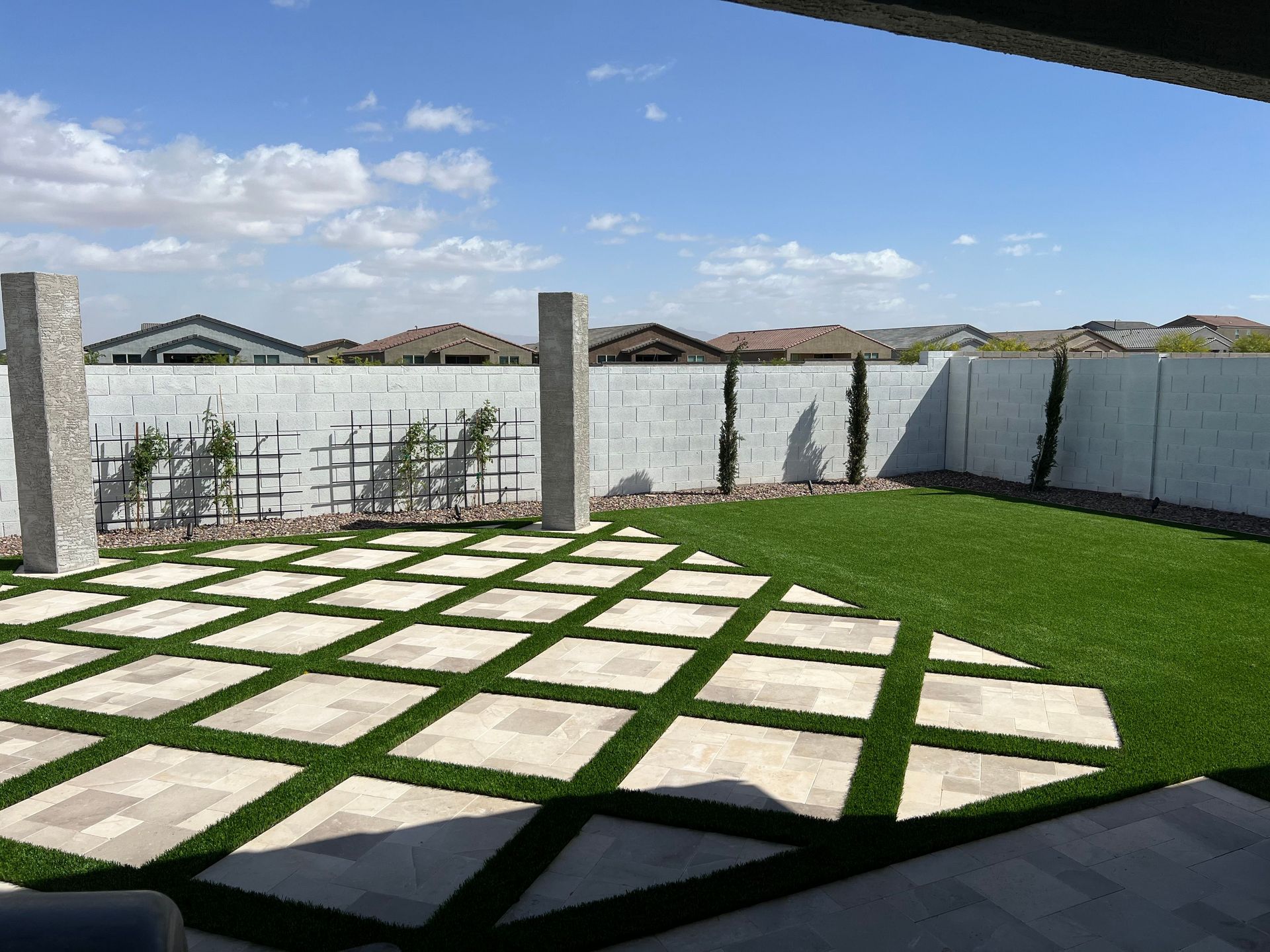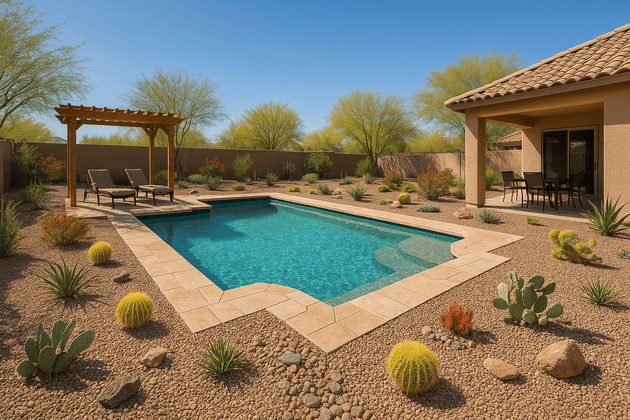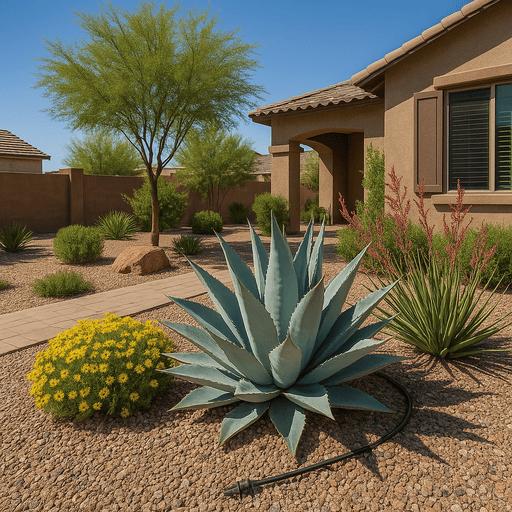Understanding the Climate for Queen Creek Desert Landscaping
Planning a desert landscape in Queen Creek requires knowledge of heat, alkaline soil, and monsoons. Homeowners often overlook rising soil temperatures, which affect root growth. Modern Desert Landscapes effective landscaping uses shade structures or tall trees on the west side to block afternoon sun and considers seasonal drainage to prevent erosion from monsoon runoff.

Selecting Plants and Materials for a Low Water Desert Landscape
Choosing the right plants and materials is essential for a beautiful, water-efficient Queen Creek landscaping. Mix slow-growing architectural plants with heat-tolerant perennials instead of just common desert shrubs. Plants like desert spoon, boulder opuntia, hesperaloe, and globe mallow offer structure with minimal irrigation. Larger gravel or blended granite stays cooler than smaller rocks. Combined with strategic mounding and well-placed boulders, these elements create a modern, intentional landscape that promotes long-term plant health.
Building an Irrigation and Layout Plan That Works With the Desert
A well designed irrigation plan is the backbone of every successful Queen Creek desert landscape. Drip irrigation should be zoned by plant type and adjusted for root growth over time rather than set once and forgotten. Placing emitters at the outer edge of each plant's mature canopy encourages deep root development, which helps plants survive extreme temperatures. Lighting, pathways, and activity zones should be designed around these irrigation lines so walking areas and outdoor living spaces remain dry and usable year round. When each part of the design works together, the result is a desert friendly landscape that stays attractive, uses water responsibly, and remains comfortable for daily living in Queen Creek.
East Valley Landscapers
Get a free landscaping quote.
Contact Us
Call Us: (480) 577-9577
East Valley Landscaping Services









